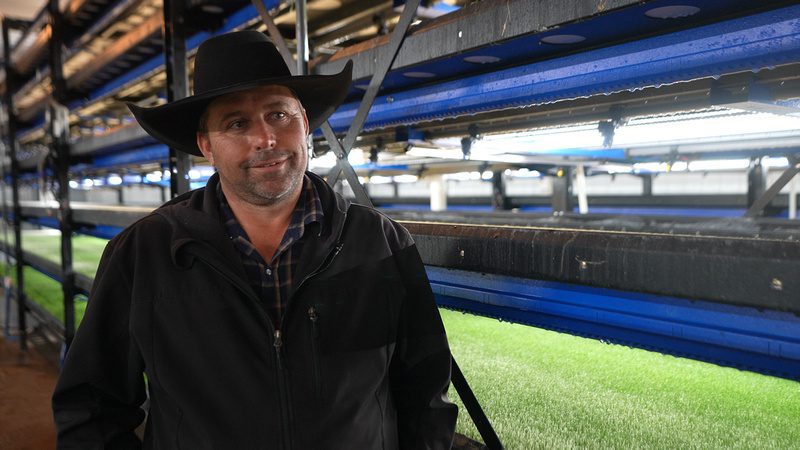
Amy Joi O’Donoghue of Deseret News profiles HydroGreen customer Rod Magnuson and his ranch in Castle Dale, Utah. With drought and the escalating cost of alfalfa, Magnuson said he turned to HydoGreen to continue his family’s legacy of ranching.

Rod Magnuson has a nice spread in rural Utah, raising cattle and alfalfa in an operation that is the backbone of a fourth-generation legacy spent in agriculture. The drought turned his prospects for survival into a nightmare. A ton of hay went for $135 in 2019. In 2021, agricultural producers paid $195 a ton.
This year? It’s $325 a ton.
The price of fertilizer for growing hay and other crops has spiked to levels not seen since 2008, which, along with energy costs, prompted riots in 40 countries around the world. In 2022, it is easily three times as much as a year ago for certain types of fertilizer.
Giving in or going big
Magnuson is comfortable in his rancher’s skin, with an amiable smile, rugged good looks, and a quiet and shy demeanor that nevertheless seeks to accommodate a small group of media firing questions at him on a recent May morning in Castle Dale, Utah.
As he explains the storage capacity of a pair of grain silos outside this building, there is the smell of ranching that wafts in the wind. Could be manure, could be the processing of white wheat ready to “plant” when it’s ready.
Each of the silos hold 28 tons that are part of a unique growing operation, that at this time, is the largest of its kind in the United States.
All eyes are on this building and the promise it holds for saving water and preserving a way of life that has been the hallmark of the West — providing not only food and fiber — but a tradition that fosters carrying on hard work that builds character, toughness and appreciation for land.
Utah and other states throughout the region have been struggling with a more than two decades-long generational drought made more complicated by raging catastrophic fires destroying private and public rangeland.
This new technology is not the panacea, but it reduces agricultural water use, helping to keep more water in the system — water that along the Wasatch Front could help the Great Salt Lake, which dipped to its historic record low last year and will likely recede even more this year.

